A1222 Sensor: Datasheet, Application, Function
Automotive, AEC-Q100 Series Open Drain 3V~24V -40°C~150°C TA Latch South Pole 15mT Trip, -15mT Release Matte Tin (Sn) 3-SSIP
Unit Price: $1.764000
Ext Price: $1.76









Automotive, AEC-Q100 Series Open Drain 3V~24V -40°C~150°C TA Latch South Pole 15mT Trip, -15mT Release Matte Tin (Sn) 3-SSIP
The A1222 is a Hall-Effect sensor. And this article will unlock more detailed information about A1222.
A1222 Pinout
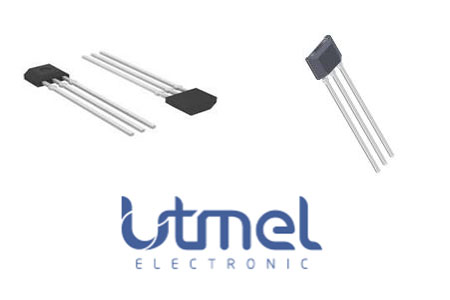
A1222 Description
The A1222 Hall-effect sensor IC is extremely temperature-stable and stress-resistant devices especially suited for operation over extended temperature ranges to 150°C.
Specifications
- TypeParameter
- Factory Lead Time8 Weeks
- Mount
In electronic components, the term "Mount" typically refers to the method or process of physically attaching or fixing a component onto a circuit board or other electronic device. This can involve soldering, adhesive bonding, or other techniques to secure the component in place. The mounting process is crucial for ensuring proper electrical connections and mechanical stability within the electronic system. Different components may have specific mounting requirements based on their size, shape, and function, and manufacturers provide guidelines for proper mounting procedures to ensure optimal performance and reliability of the electronic device.
Through Hole - Mounting Type
The "Mounting Type" in electronic components refers to the method used to attach or connect a component to a circuit board or other substrate, such as through-hole, surface-mount, or panel mount.
Through Hole - Package / Case
refers to the protective housing that encases an electronic component, providing mechanical support, electrical connections, and thermal management.
3-SSIP - Number of Pins3
- Test Conditions-40°C ~ 150°C
- Operating Temperature
The operating temperature is the range of ambient temperature within which a power supply, or any other electrical equipment, operate in. This ranges from a minimum operating temperature, to a peak or maximum operating temperature, outside which, the power supply may fail.
-40°C~150°C TA - Packaging
Semiconductor package is a carrier / shell used to contain and cover one or more semiconductor components or integrated circuits. The material of the shell can be metal, plastic, glass or ceramic.
Bulk - Series
In electronic components, the "Series" refers to a group of products that share similar characteristics, designs, or functionalities, often produced by the same manufacturer. These components within a series typically have common specifications but may vary in terms of voltage, power, or packaging to meet different application needs. The series name helps identify and differentiate between various product lines within a manufacturer's catalog.
Automotive, AEC-Q100 - Published2009
- JESD-609 Code
The "JESD-609 Code" in electronic components refers to a standardized marking code that indicates the lead-free solder composition and finish of electronic components for compliance with environmental regulations.
e3 - Pbfree Code
The "Pbfree Code" parameter in electronic components refers to the code or marking used to indicate that the component is lead-free. Lead (Pb) is a toxic substance that has been widely used in electronic components for many years, but due to environmental concerns, there has been a shift towards lead-free alternatives. The Pbfree Code helps manufacturers and users easily identify components that do not contain lead, ensuring compliance with regulations and promoting environmentally friendly practices. It is important to pay attention to the Pbfree Code when selecting electronic components to ensure they meet the necessary requirements for lead-free applications.
yes - Part Status
Parts can have many statuses as they progress through the configuration, analysis, review, and approval stages.
Active - Moisture Sensitivity Level (MSL)
Moisture Sensitivity Level (MSL) is a standardized rating that indicates the susceptibility of electronic components, particularly semiconductors, to moisture-induced damage during storage and the soldering process, defining the allowable exposure time to ambient conditions before they require special handling or baking to prevent failures
1 (Unlimited) - Number of Terminations3
- Terminal Finish
Terminal Finish refers to the surface treatment applied to the terminals or leads of electronic components to enhance their performance and longevity. It can improve solderability, corrosion resistance, and overall reliability of the connection in electronic assemblies. Common finishes include nickel, gold, and tin, each possessing distinct properties suitable for various applications. The choice of terminal finish can significantly impact the durability and effectiveness of electronic devices.
Matte Tin (Sn) - Additional Feature
Any Feature, including a modified Existing Feature, that is not an Existing Feature.
REVERSE BATTERY PROTECTION, SHORT-CIRCUIT PROTECTION - Voltage - Supply
Voltage - Supply refers to the range of voltage levels that an electronic component or circuit is designed to operate with. It indicates the minimum and maximum supply voltage that can be applied for the device to function properly. Providing supply voltages outside this range can lead to malfunction, damage, or reduced performance. This parameter is critical for ensuring compatibility between different components in a circuit.
3V~24V - Function
The parameter "Function" in electronic components refers to the specific role or purpose that the component serves within an electronic circuit. It defines how the component interacts with other elements, influences the flow of electrical signals, and contributes to the overall behavior of the system. Functions can include amplification, signal processing, switching, filtering, and energy storage, among others. Understanding the function of each component is essential for designing effective and efficient electronic systems.
Latch - Output Type
The "Output Type" parameter in electronic components refers to the type of signal or data that is produced by the component as an output. This parameter specifies the nature of the output signal, such as analog or digital, and can also include details about the voltage levels, current levels, frequency, and other characteristics of the output signal. Understanding the output type of a component is crucial for ensuring compatibility with other components in a circuit or system, as well as for determining how the output signal can be utilized or processed further. In summary, the output type parameter provides essential information about the nature of the signal that is generated by the electronic component as its output.
Open Drain - Max Output Current
The maximum current that can be supplied to the load.
25mA - Termination Type
Termination Type in electronic components refers to the method used to connect the component to a circuit board or other electronic devices. It specifies how the component's leads or terminals are designed for soldering or mounting onto a PCB. Common termination types include through-hole, surface mount, and wire lead terminations. The termination type is an important consideration when selecting components for a circuit design, as it determines how the component will be physically connected within the circuit. Different termination types offer varying levels of durability, ease of assembly, and suitability for specific applications.
SOLDER - Operating Supply Current
Operating Supply Current, also known as supply current or quiescent current, is a crucial parameter in electronic components that indicates the amount of current required for the device to operate under normal conditions. It represents the current drawn by the component from the power supply while it is functioning. This parameter is important for determining the power consumption of the component and is typically specified in datasheets to help designers calculate the overall power requirements of their circuits. Understanding the operating supply current is essential for ensuring proper functionality and efficiency of electronic systems.
4mA - Polarization
In electronic components, polarization refers to the orientation or alignment of certain properties within the component. This property can affect the behavior and performance of the component in a circuit. For example, in capacitors, polarization refers to the alignment of the electric field within the dielectric material. Polarized capacitors, such as electrolytic capacitors, have a specific orientation for proper functioning. In other components like diodes, polarization refers to the direction of current flow, which is important for their correct operation. Understanding polarization is crucial for proper usage and integration of electronic components in circuits.
South Pole - Output Current
The rated output current is the maximum load current that a power supply can provide at a specified ambient temperature. A power supply can never provide more current that it's rated output current unless there is a fault, such as short circuit at the load.
25mA - Max Supply Current
Max Supply Current refers to the maximum amount of electrical current that a component can draw from its power supply under normal operating conditions. It is a critical parameter that ensures the component operates reliably without exceeding its thermal limits or damaging internal circuitry. Exceeding this current can lead to overheating, performance degradation, or failure of the component. Understanding this parameter is essential for designing circuits that provide adequate power while avoiding overload situations.
4mA - Sensing Range
The sensing range of position sensors is the displacement between the sensing face of the sensor and the approaching measurement object that triggers a signal change in the sensor.
15mT Trip, -15mT Release - Hysteresis
Hysteresis in electronic components refers to the phenomenon where the output of a system depends not only on its current input but also on its past inputs. In other words, the system's response to a particular input may differ depending on whether the input is increasing or decreasing. This behavior is often seen in devices such as sensors, amplifiers, and control systems. Hysteresis can be intentional, designed to provide stability or prevent rapid switching, or it can be unwanted and lead to inaccuracies in the system's performance. Understanding and managing hysteresis is important in ensuring the reliability and accuracy of electronic components and systems.
22 mT - Output Circuit Type
The parameter "Output Circuit Type" in electronic components refers to the configuration of the output circuitry of a device. It describes how the output signal is generated and delivered by the component. Common types of output circuit configurations include open collector, push-pull, tri-state, and high impedance. The choice of output circuit type can impact factors such as signal strength, compatibility with other components, and power consumption. Understanding the output circuit type is important for proper integration and operation of electronic components within a circuit or system.
SINGLE-ENDED - Magnetic Field Range-Min
The parameter "Magnetic Field Range-Min" in electronic components refers to the minimum level of magnetic field strength that the component can effectively operate within without experiencing any adverse effects. This parameter is crucial for components that are sensitive to magnetic fields, such as sensors, actuators, and certain types of memory devices. Exceeding the specified minimum magnetic field range can lead to malfunctions, errors, or even permanent damage to the component. It is important to carefully consider and adhere to this parameter when designing or using electronic systems in environments where magnetic fields are present to ensure proper functionality and reliability.
-15 mT - Magnetic Field Range-Max
The parameter "Magnetic Field Range-Max" in electronic components refers to the maximum level of magnetic field strength that the component can withstand without experiencing any adverse effects on its performance or functionality. This parameter is crucial for components that are sensitive to magnetic fields, such as sensors, actuators, and certain types of electronic circuits.Exceeding the specified maximum magnetic field range can lead to issues such as interference, distortion, or even permanent damage to the component. Manufacturers provide this information to help users understand the limitations of the component and ensure proper handling and installation to prevent any potential problems related to magnetic fields.It is important to consider the Magnetic Field Range-Max parameter when designing electronic systems or selecting components for applications where exposure to magnetic fields is a concern, to ensure reliable and stable operation of the components within their specified limits.
15 mT - Height3.02mm
- Length4.09mm
- Width1.52mm
- REACH SVHC
The parameter "REACH SVHC" in electronic components refers to the compliance with the Registration, Evaluation, Authorization, and Restriction of Chemicals (REACH) regulation regarding Substances of Very High Concern (SVHC). SVHCs are substances that may have serious effects on human health or the environment, and their use is regulated under REACH to ensure their safe handling and minimize their impact.Manufacturers of electronic components need to declare if their products contain any SVHCs above a certain threshold concentration and provide information on the safe use of these substances. This information allows customers to make informed decisions about the potential risks associated with using the components and take appropriate measures to mitigate any hazards.Ensuring compliance with REACH SVHC requirements is essential for electronics manufacturers to meet regulatory standards, protect human health and the environment, and maintain transparency in their supply chain. It also demonstrates a commitment to sustainability and responsible manufacturing practices in the electronics industry.
No SVHC - Radiation Hardening
Radiation hardening is the process of making electronic components and circuits resistant to damage or malfunction caused by high levels of ionizing radiation, especially for environments in outer space (especially beyond the low Earth orbit), around nuclear reactors and particle accelerators, or during nuclear accidents or nuclear warfare.
No - RoHS Status
RoHS means “Restriction of Certain Hazardous Substances” in the “Hazardous Substances Directive” in electrical and electronic equipment.
ROHS3 Compliant
A1222 Features
AEC-Q100 automotive qualified
Quality Managed (QM), ISO 26262:2011 compliant
Symmetrical latch switch points
Resistant to physical stress
Superior temperature stability
Output short-circuit protection
Operation from unregulated supply down to 3 V
Reverse-battery protection
Solid-state reliability
Small package sizes
A1222 Application
Extensive applications information for Hall-effect devices is available in:
• Hall-Effect IC Applications Guide, Application Note 27701
• Guidelines for Designing Subassemblies Using Hall-Effect Devices, Application Note 27703.1
• Soldering Methods for Allegro’s Products – SMT and ThroughHole, Application Note 26009
A1222 Functional Block Diagram
The output of these devices switches low (turns on) when a magnetic field perpendicular to the Hall element exceeds the operate point threshold, BOP (see panel A of figure 1). After turn-on, the output voltage is VOUT(SAT).
The functional block diagram is given below:
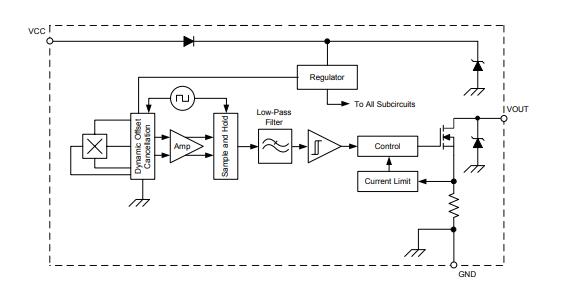
A1222 Package
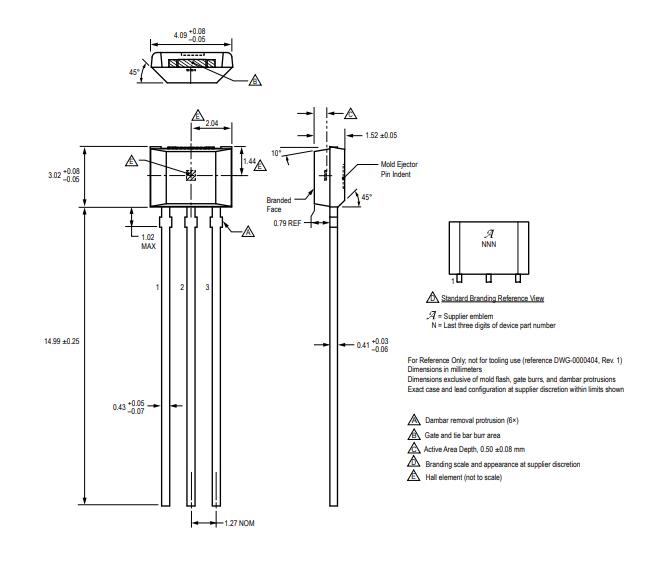
A1222 Manufacturer
As a leading company in the development, manufacture and market of high-performance semiconductors, Allegro MicroSystems, LLC provides high-growth applications for the automotive market and also stays focus on consumer/communications, automation and industrial solutions. Headquartered in Worcester, Massachusetts (USA) Allegro locates its design, applications and sales support centres worldwide.
Datasheet PDF
- Datasheets :
Popularity by Region
What is the A1222 family?
The A1222 family of Hall-effect sensor ICs is extremely temperature-stable and stress-resistant devices especially suited for operation over extended temperature ranges to 150°C. Superior high-temperature performance is made possible through dynamic offset cancellation, which reduces the residual offset voltage normally caused by device overmolding, temperature dependencies, and thermal stress. Each device includes on a single silicon chip a voltage regulator, Hall voltage generator, small-signal amplifier, chopper stabilization, Schmitt trigger, and a short-circuit protected open-drain output to sink up to 25 mA.
What about the functional safety of A1222?
The A1222 complies with the international standard for automotive functional safety, ISO 26262:2011, as Quality Managed (QM) products. This device is each classified as a SEooC (Safety Element out of Context) and can be easily integrated into safety-critical systems requiring higher ASIL ratings that incorporate external diagnostics or use measures such as redundancy. Safety documentation will be provided to support and guide the integration process. For further information, contact your local Allegro field applications engineer or sales representative.
 SG3524 Modulators: Price, Circuit and Pinout
SG3524 Modulators: Price, Circuit and Pinout19 July 20215632
 TDA8356 Power Circuit: Equivalent, Pinout, Datasheet
TDA8356 Power Circuit: Equivalent, Pinout, Datasheet18 March 20229970
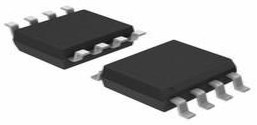 MIC2545A Programmable Current-Limit High-Side Switch: Pinout, Equivalent and Datasheet
MIC2545A Programmable Current-Limit High-Side Switch: Pinout, Equivalent and Datasheet29 March 2022396
 ENC28J60 Ethernet Controller:Pinout, Datasheet, Schematic
ENC28J60 Ethernet Controller:Pinout, Datasheet, Schematic26 August 20214490
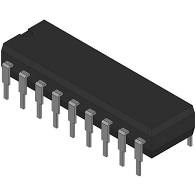 ADM3222ANZ Transceivers: Pinout, Specification, Datasheet
ADM3222ANZ Transceivers: Pinout, Specification, Datasheet27 May 2021437
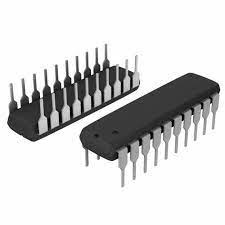 AD7701BNZ ADC: Pinout, Specification, and Datasheet
AD7701BNZ ADC: Pinout, Specification, and Datasheet01 June 2021901
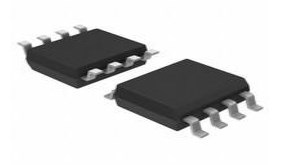 TL1431 Adjustable Voltage Reference: Pinout, Specification and Datasheet
TL1431 Adjustable Voltage Reference: Pinout, Specification and Datasheet19 November 20211276
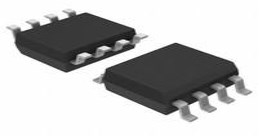 MX25V1635FM1I Flash Memory: Features, Pinout, and Datasheet
MX25V1635FM1I Flash Memory: Features, Pinout, and Datasheet18 March 20221058
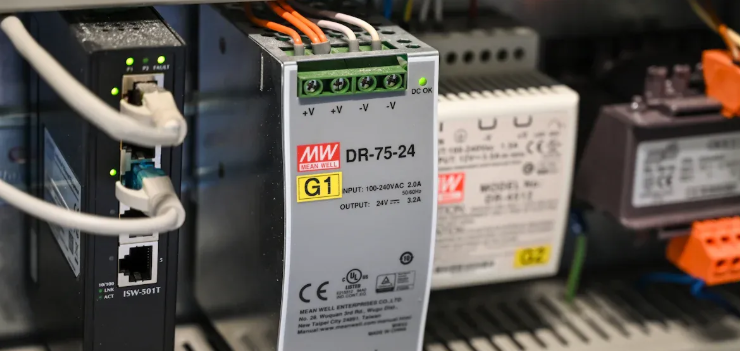 What Makes Time Delay Relays Essential in Automation
What Makes Time Delay Relays Essential in Automation10 July 2025604
 Switch-mode Power Supply Basics
Switch-mode Power Supply Basics14 December 20205732
 A Practical Methodology to Simulate 4H-SiC and GaN p-n Diodes with Model Parameter Adjustment in Medici
A Practical Methodology to Simulate 4H-SiC and GaN p-n Diodes with Model Parameter Adjustment in Medici07 February 20232287
 What Sensors are Used in Industrial Robots?
What Sensors are Used in Industrial Robots?09 November 20215495
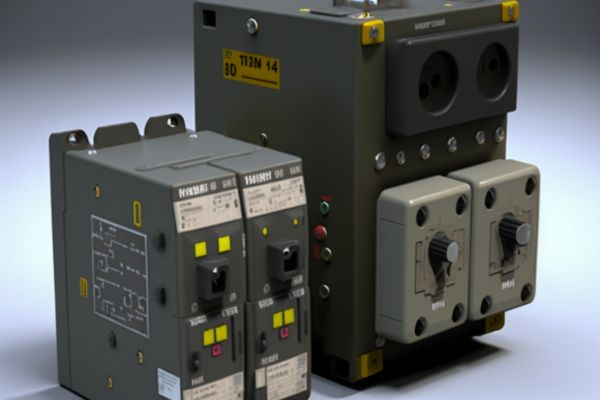 Modeling, Modulation Analysis of Filter-Integrated Three-Switch Boost Inverter
Modeling, Modulation Analysis of Filter-Integrated Three-Switch Boost Inverter12 April 20232871
 The Future of Semiconductors: Chiplets and Super NoCs
The Future of Semiconductors: Chiplets and Super NoCs30 August 20231892
 Introduction to Coupling Capacitor
Introduction to Coupling Capacitor04 February 20215352
 Understanding Machine Vision and Visual Sensor
Understanding Machine Vision and Visual Sensor27 September 20211719
Allegro MicroSystems
In Stock: 7464
Minimum: 1 Multiples: 1
Qty
Unit Price
Ext Price
1
$1.764000
$1.76
10
$1.664151
$16.64
100
$1.569954
$157.00
500
$1.481088
$740.54
1000
$1.397253
$1,397.25
Not the price you want? Send RFQ Now and we'll contact you ASAP.
Inquire for More Quantity




